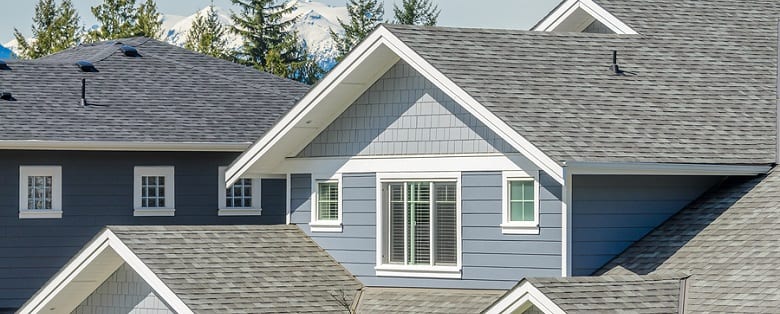
When it comes to membrane roofing for flat roofs and similar installations, there are a lot of products to choose from, each with their own benefits. PVC roofs have been the standard for a long time and was the first weldable membrane roof available on the market. Yet PVC does have its shortcomings, and TPO and KEE roof systems have become popular as well. A roofing company may choose one of these products to use on a roofing job, depending on the application and how well each particular product fits that application.
PVC Membrane Roofs
PVC has been the standard membrane material for flat roofing for some time, although it has definite undesirable drawbacks. PVC by nature is a more rigid material, which is produced by adding softeners called plasticizers to make the PVC more flexible and easier to handle. One main disadvantage is that plasticizers leak out of the PVC after a while because of UV exposure. This can cause the membrane to dry, which can lead to cracking.
Generally speaking, PVC is the least weather resistant membrane of the three types now available. On the plus side, PVC membrane is more chemical and oil resistant than other types of membrane. This makes it more suitable for a roofing company to use in certain applications where exposure to chemicals are an issue, such as restaurants with grease traps on the roof.
TPO Membrane Roofs
TPO, or Thermoplastic polyolefin, was introduced to address the shortcomings of PVC. Although it seems to do that quite well, it too has disadvantages. TPO’s strong point is its ability to withstand UV rays without sustaining as much damage as PVC. It is also more heat resistant than PVC, another plus in terms of more efficient roofing that reflects more heat than it absorbs and prevents heat from being transferred into a building.
TPO is stronger than PVC and has a higher breaking strength, making it more desirable in applications where punctures and penetrations could be an issue. On the downside, TPO is not as flexible during application as PVC and is not tolerant of grease, oils, or other chemicals like PVC.
KEE Membrane Roofs
KEE, or ketone ethylene ester, is a PVC polymer membrane that includes KEE along with the other standard but more volatile plasticizers. The difference between PVC and KEE is that PVC membrane is comprised of over 50 percent PVC, while the KEE roofing membrane is over 50 percent KEE. When mixed with PVC, it makes a tougher, more durable membrane that is less likely to crack with the protection of the KEE keeping the membrane flexible, even if the other plasticizers migrate out of the material. KEE membranes are even more durable in terms of break and tear strength than TPO; however, just like PVC, they are not as flexible or fitting for all applications.
When comparing the differences between the three types of roofing, it is easy to see they each have advantages and disadvantages. Although KEE membrane roofing is fairly new, TPO is now widely used in all types of roofing applications and is gaining popularity as a durable, resistant, and efficient roof material. Although PVC continues to be a favorite after many years of use, with KEE membrane now available, it is difficult to determine if the use of plain PVC is likely to decline. Customers searching for the best roofing for their home or building should discuss these various products and their suitability with an experienced roofing company!
Need A Roofing Company In College Station TX?
Turn To Done Right Roofing!
Call 979-710-7839!
Additional Articles:
How to Protect Your Roof From A Hurricane's Strong Winds!
Roof Warning Signs - What Do They Mean?
Noisy Roofs - Find the Problem and Fix It!
